Navigation tips: search for the following keywords to navigate this page effetively:
too long, double nudging , instruction containing, new fin, new ini
CI centering, constraining, steched molecule, extra local minima, manual adjustments
metastable intermediate, multiple saddles
Entry 1, Credit --- Andy Liu (2021 Spring)
key words: too long, double nudging, instruction containing
Recommended Action: Restart band from beginning with double the amoung of images ( 5→9). Details: This band apparently had trouble converging. The climbing image is not at the center where it is prefered.
It appeared that the saddle has been between images, and the climbing image keeps pushing the band longer.
By run12, the band is more than 1 angstrom per image long. So doubling image count is recommended.
We use 9 images instead of 5*2=10 because it's preferable to have an even number of images on both sides of the climbing image.
Instructions: To double the band length, instead of nebmake.pl ini fin 5, do nebmake.pl ini fin 9 .
Then change number of images specified in INCAR by changing IMAGES = 5 to IMAGES = 9 .
Then request the appriopriate amount of nodes by changing frilab5neb.sub mpi24 120 to mip24 216 .
To turn on double nudging, set INCAR LDNEB = .TRUE.. If this line is commented out, uncomment it. If this line is absent, add it.
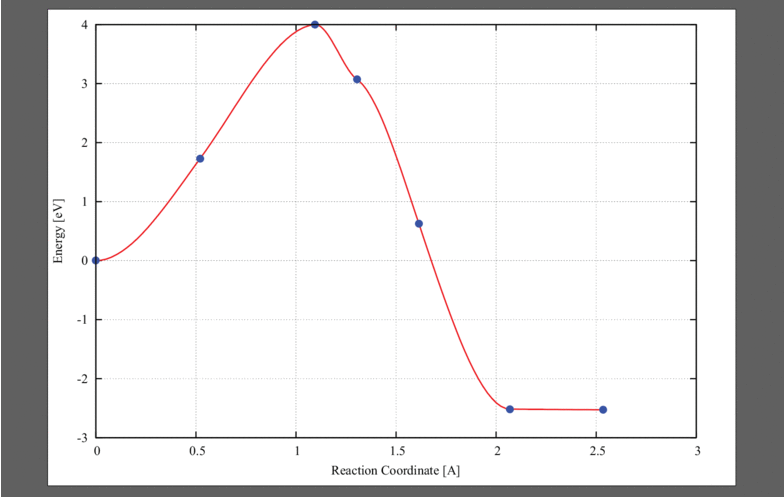
Entry 2, Credit --- Andy Liu (2021 Spring)
key words: new end
Recommended Action: Rename the fin used for this band as fin0, and rename the band as band0. Remake the fin with 05/CONTCAR of this run. Submit the new fin and use it to make the band. Optimize the new band with the same INCAR KPOINTS POTCAR and frilab5neb.sub from band0.
Details: a lower minimum at the end of the band is indicated by the mep. Inspecting the mep, we see that 05 is chemically identical to 06. Between these two images, the only change is the Cl atom hopping from one O2 to another. By recreating the final state, we can cut the band shorter and maybe capture a final state that is lower in energy.
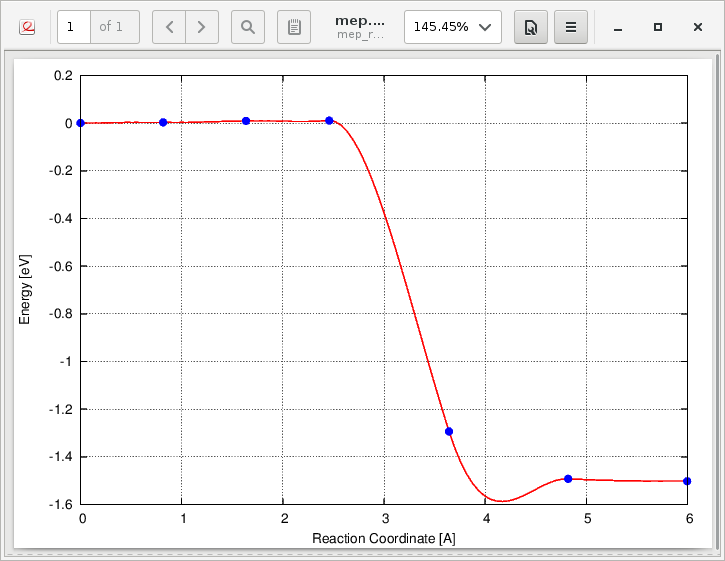
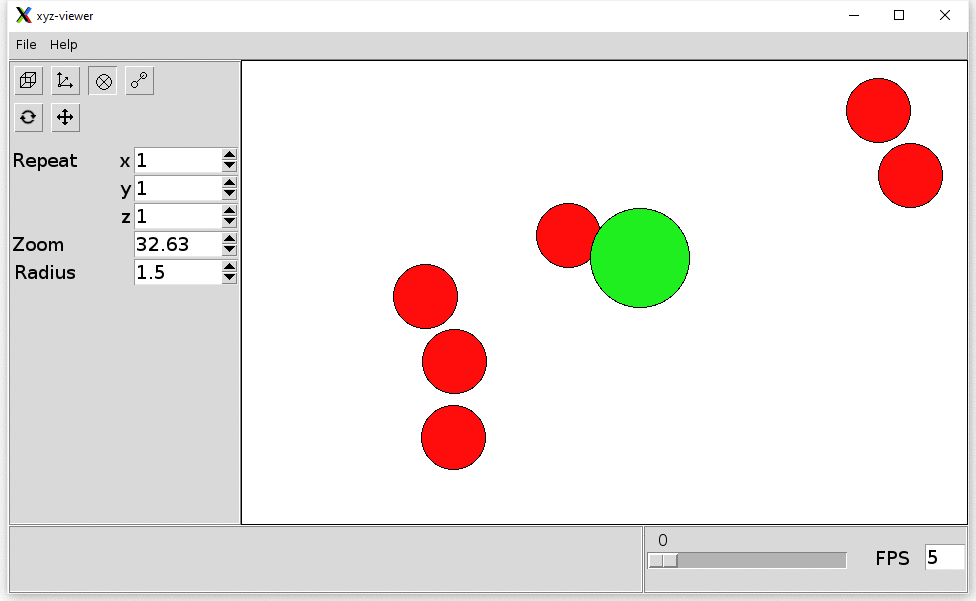
Entry 3, Credit --- Grant Shim (2021 Spring)
key words: CI centering, too long, double nudging, constraining
Recommended Action: Remake a band with the climbing image as the central image. Optional: create new ini and new fin, and constrain some atoms in ini and fin. Use double nudging. Details: This band started off great when the maximum interpolated by the band is very close to one of the images.
However, while the climbing image (CI) is searching for the saddle point, it keeps pushing nearby images, resulting in elongation of the band.
When the band is long enough, the CI would miss the saddle point and relax to either the initial state or the final state, only with different positioning.
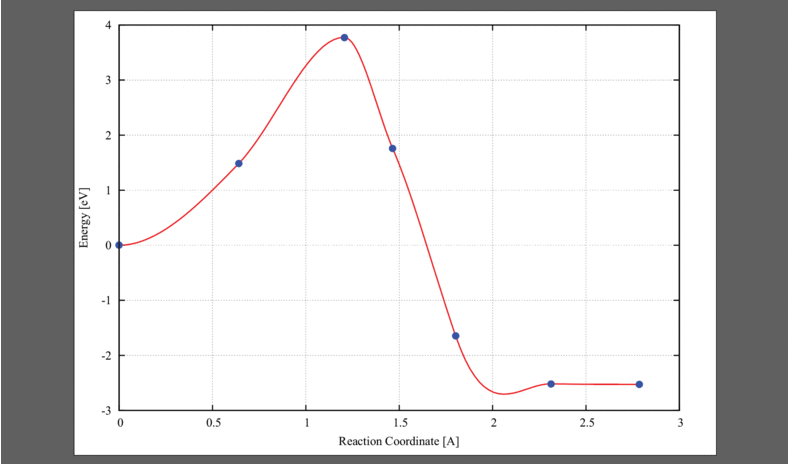
However, this band may be salvagable. The CI that is closest to the saddle is worth keeping. In this example, the CI is the image02.
We will take the band at the end of one run, whose maximum is closest to an image. In this case, the maximum is at image 2.002860. We will therefore keep image 02.
We find the total length of the band at the end of spline.dat, which is 4.02. This tells that our now 02 will be at the center of our next band.
Let's suppose we want to make a band with higher resolution. We need more than the 5 images we started with. Suppose we choose to have 11 images.
That means our current 02 will become 06, with 5 images between it and the ini (00) as well as the fin (12). Below is how we construct the new band:
- Rename the current band directory to archive it with command mv band band#.
- Make sure that you exit your band# directory. Then make the new band directory mkdir band, go into it cd bandand make a temp directory within the new band mkdir tempand go into it cd temp.
- Make the first part of our new band with ini and image 02 of the selected run and move the directories from the current temp directory to the band directory above.

- Then we make the second half of the new band with the same image 02 and fin. However, this time we need to manually move and rename the image numbers.
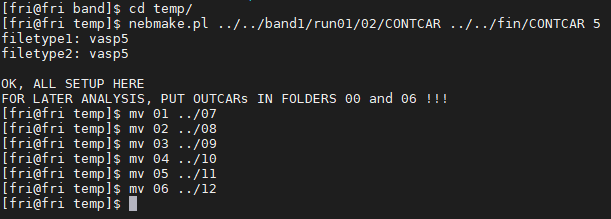
- Move OUTCARs from ini and fin to 00 and 12. Change the INCAR and fri*.sub accordingly. The new band with a climbing image at the center is made.
These degrees of freedom allows the band length to grow uncontrollably, but we may be able to limit it. We can recreate our ini and fin basing on 02, where the two molecules are close.
We will constrain the furtheset oxygen atom in each molecule so that they are not allowed to move at all ( Use Tools dropdown menu and open constraints dialog and click "constrain selected atoms".
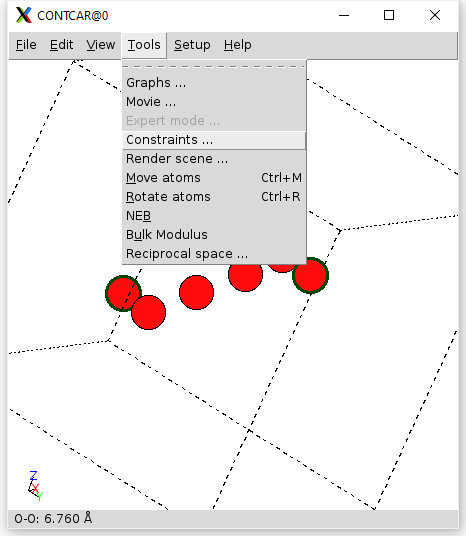
Then we move the oxygen atoms involved in the reactions back into their starting ozone molecule to create a new initial state (save this as your new ini POSCAR after you've archived your previous ini).
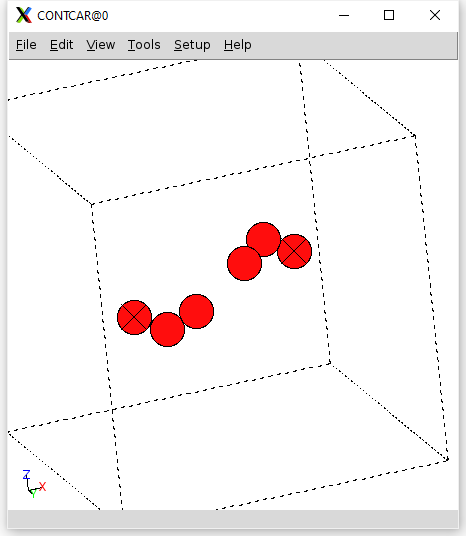
Simillarly, we create a new fin by moving the two reacting oxygen atoms away from both ozone molecules.
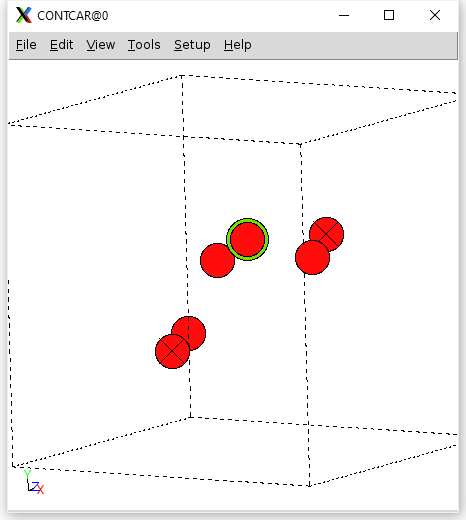
The new band created with constrained atoms may use the image 02 mentioned above.
Beware that this method fixes the distance between the two ozone molecules. The transition state, if found, may have a higher energy because of this. So maybe constraining only one of the oxygen atom is a better idea.
Entry 4, Credit --- Andy Liu & Arina Lim (2021 Spring)
key words : steched molecule, extra local minima, manual adjustments
Recommended Action: Wand back to the POSCARs of run0, manually adjust the affected images and reset the band like one would with CI centering. You may also need to follow up with CI centering if necessary.
Details: The mep indicates that an extra minimum is found between two high barriers.
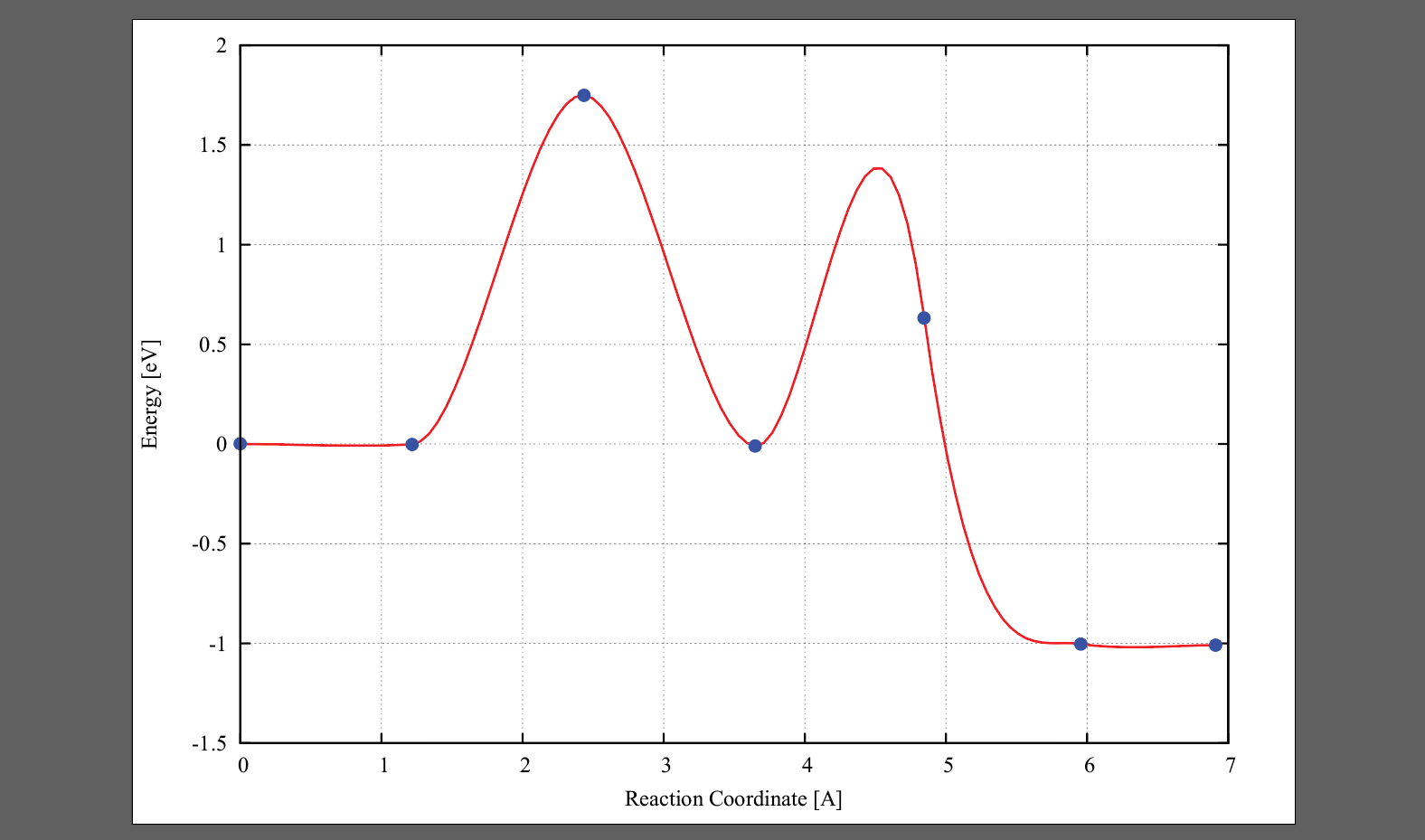
However, inspecting the movie reviews that this is due to one molecule being broken prior to the actual reaction, as an impropert band set up. The O atom in question is leaving the ozone molecule before it could meet the Cl. This phenomenon is rather common.

In order to fix this, we first identify the problem being that Cl needs to rotate before O can participate in the reaction. So we set this as a middle point that breaks the band into two parts, similar to how CI would devide the band into 2 parts. The image we are creating is the following: we leave the ozone molecule unchanged, but move the Cl cluster to a position ready for reaction.
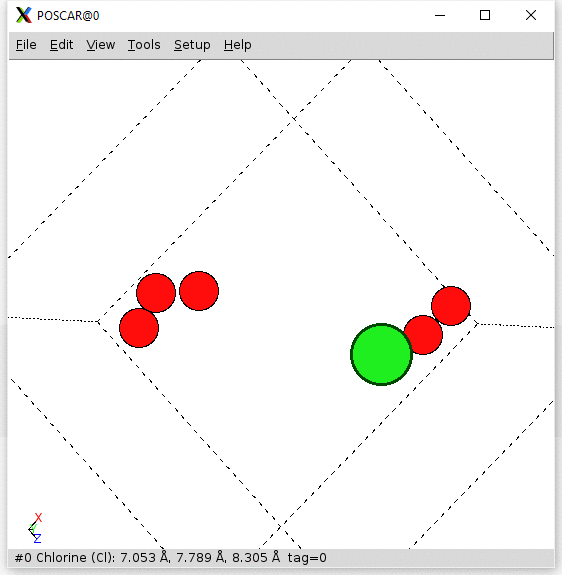
We make this newly made image into our 02, because we still want our CI to be image 03 (in the middle). We make the first and half part of the band in a similar way shown in CI centering.
However, since we did not precisly calculate the band length for the first and second half of the band, our CI as a result may not be at the center. It is therefore possible that you will need to adjust the band further alone the way with CI centering.
Entry 5, Credit --- Jesus Munoz-Castaneda (2020 Summer) & Grant Shim (2021 Spring)
key words : metastable intermediate, multiple saddles.
Recommended Action: Optimize the middle image between two barriers/saddles. After optimization, this image will split the current band into two. The first band goes from the initial state to this image. The second band starts with this image and ends with the previous final state. If the band is symmetrical, meaning that if the initial and final states are chemically identical, then only one of the bands are needed. This is a case where it's symmetrical.
Details:First clue comes from the mep.eps. It clearly shows that there are two saddles, as image 02 and 04 shows, and that there is a metastable intermediate, as image 03 shows.
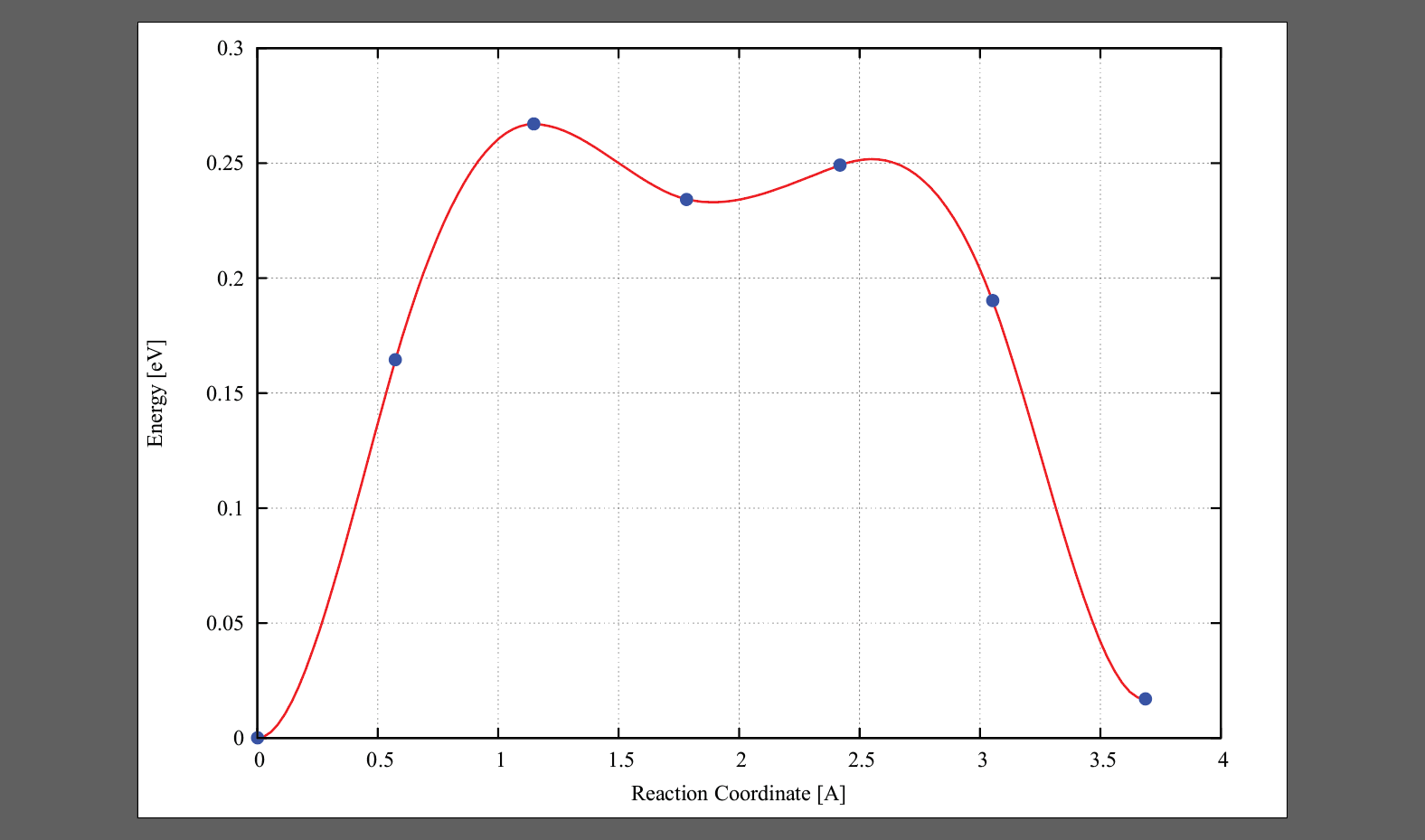
However, we can't trust the mep alone. We need to inspect the movie to learn the nature behind these saddles and intermediates to determine if they are real.
Looking at the movie, we can see that the Li started in an tetrahedral site, moved through an octahedral site and ended in another tetrahedral site.
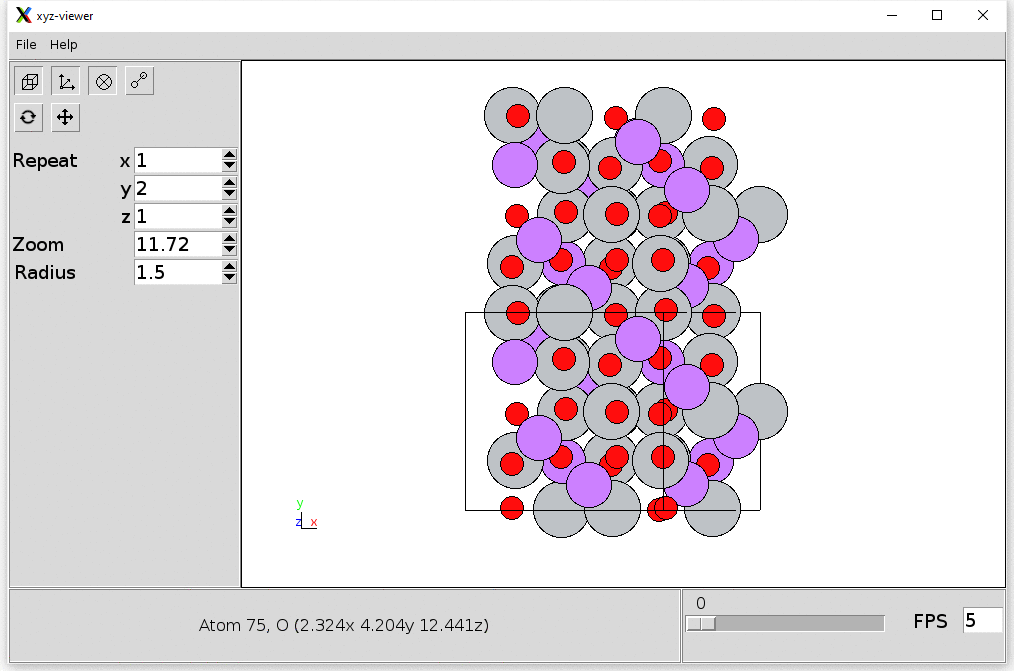
This can be difficult to see for untrained eyes. A tetrahedral site is where Li binds to 4 oxygen atoms that form an tetrahedron. An octahedral site is Li binds to 6 oxygen atoms that form a octahedron. This is more apparent when the POSCAR(CONTCAR)s are visualized using VESTA by JP Minerals.

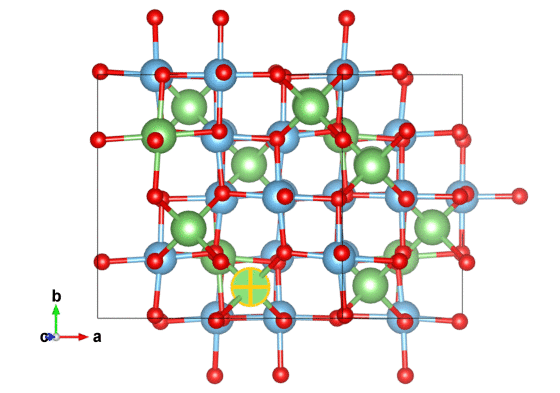
Since we want one band to contain only one saddle, we need to break this band into two. We can find the local minimum indicated by image 03 by taking it out to optimize it. Li in an octahedral site in this case is higher in energy than a tetrahedral site but it should be stable. A higher energy local minimum is a metastable state, compared to the low energy tetrahedral state which is a stable state.
Since we know that the transformation is from tetrahedral to octahedral and then to tetrahedral, and the initial and final states are identical (this would not be the case if there is another element other than Ti nearby), we can safely say that the two bands before and after the octahedral site should be symmetrical and we can do only one of those.
However, from an automation point of view, we'd rather do both.
Setting up the bands should be similar to entry 4.

